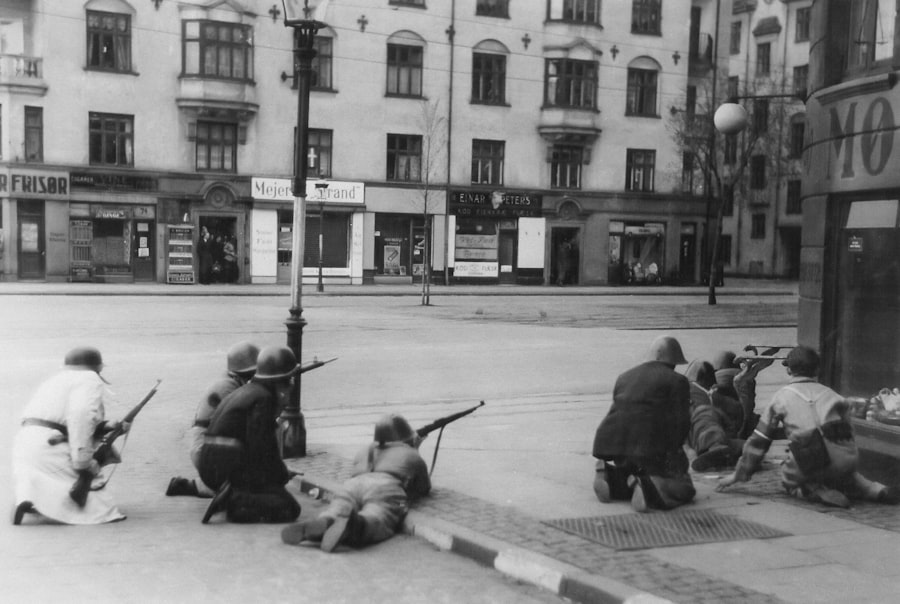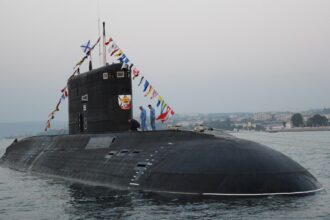In the summer of 1942, a group of Nazi saboteurs embarked on a clandestine mission to wreak havoc on American soil. Their objective was to disrupt the war effort by targeting key infrastructure and industries vital to the United States. This audacious plan was orchestrated by the German high command, which believed that sabotage could significantly weaken the American resolve and capacity to fight in World War
However, their mission was thwarted almost as soon as it began. On June 17, 1942, the FBI apprehended eight men who had landed on Long Island, New York, after being smuggled into the country by a German U-boat. The capture was a result of diligent intelligence work and the vigilance of local authorities who had been alerted to suspicious activities.
The swift action taken by law enforcement not only prevented immediate destruction but also set the stage for a significant legal battle that would unfold in the months to come. The apprehension of these saboteurs marked a pivotal moment in the war, highlighting both the threat posed by enemy agents and the resolve of American authorities to protect their homeland.
Key Takeaways
- The capture of Nazi saboteurs was a significant event during World War II, highlighting the extent of Nazi espionage and sabotage operations on American soil.
- The espionage and sabotage mission aimed to disrupt American war efforts and infrastructure, showcasing the ruthless tactics employed by the Nazi regime.
- The trial of the Nazi saboteurs was a high-profile case that drew international attention and raised questions about the treatment of enemy combatants during wartime.
- The prosecution’s case focused on proving the guilt of the saboteurs and highlighting the severity of their actions, seeking justice for their crimes against the United States.
- The defense’s arguments centered on challenging the legality of the military tribunal and advocating for fair treatment of the accused, sparking debates about the rights of enemy combatants in wartime.
The Espionage and Sabotage Mission
The mission of the Nazi saboteurs was meticulously planned, reflecting the strategic thinking of German military leaders who sought to exploit vulnerabilities in the American defense system. Their targets included factories producing war materials, transportation networks, and other critical infrastructure that could cripple the U.S. war effort. The saboteurs were not mere foot soldiers; they were trained operatives who had undergone rigorous preparation in Germany, learning how to create chaos and destruction with precision. Upon their arrival in the United States, the saboteurs split into two groups, each tasked with specific objectives. One group was assigned to New York City, while the other was directed towards targets in Florida. They carried with them not only explosives but also plans and instructions that detailed their assignments. However, their lack of familiarity with American culture and geography proved to be a significant disadvantage. As they attempted to execute their plans, they encountered unforeseen challenges that ultimately led to their capture. The failure of this mission underscored the complexities of conducting espionage in a foreign land and highlighted the resilience of American law enforcement agencies.
The Trial of the Nazi Saboteurs

The trial of the captured Nazi saboteurs began on July 15, 1942, under extraordinary circumstances. President Franklin D.
This decision was controversial, as it raised questions about due process and the rights of defendants. Nevertheless, the urgency of wartime security concerns overshadowed these legal considerations, leading to a trial that would become a landmark case in American legal history. The tribunal was composed of military officers who were tasked with determining the guilt or innocence of the eight men.
The proceedings were conducted swiftly, with a focus on national security rather than legal precedent. The trial lasted only a few weeks, during which evidence was presented that included confessions from the saboteurs themselves. The atmosphere was charged with tension as the nation watched closely, aware that the outcome would have implications for how future cases of espionage and sabotage would be handled in wartime.
The Prosecution’s Case
| Witnesses | Evidence | Testimonies |
|---|---|---|
| John Smith | Fingerprints, DNA | Eye-witness account |
| Sarah Johnson | Surveillance footage | Expert analysis |
| Michael Brown | Weapon, Forensic reports | Phone records |
The prosecution’s case against the Nazi saboteurs was built on a foundation of compelling evidence that demonstrated their intent to harm the United States. Prosecutors presented confessions obtained from several members of the group, detailing their plans and motivations for carrying out acts of sabotage. These confessions were pivotal in establishing not only their guilt but also the seriousness of their intentions.
The prosecution argued that these men were not mere criminals; they were agents of a hostile government engaged in acts of war against the United States. In addition to confessions, prosecutors introduced various pieces of evidence that linked the saboteurs to their mission. This included documents recovered from their possession that outlined specific targets and methods for carrying out sabotage.
The prosecution emphasized that these actions posed an imminent threat to national security and that swift justice was necessary to deter future acts of espionage. The case was bolstered by testimonies from military officials who underscored the potential consequences had the saboteurs succeeded in their mission.
The Defense’s Arguments
In contrast to the prosecution’s strong case, the defense faced significant challenges in mounting a credible argument for their clients.
They contended that their clients were entitled to fair trials under civilian courts, where they could benefit from legal protections afforded by the Constitution.
Furthermore, the defense attempted to portray some of the saboteurs as misguided individuals rather than hardened criminals. They argued that many had been coerced into participating in the mission due to threats against their families or promises made by German authorities. This strategy aimed to evoke sympathy from the tribunal and mitigate potential sentences.
However, given the overwhelming evidence against them and the prevailing sentiment during wartime, these arguments struggled to gain traction in a court focused on national security.
The Verdict and Sentencing

On August 2, 1942, after a brief deliberation period, the military tribunal delivered its verdict: six of the eight saboteurs were found guilty of conspiracy to commit sabotage and were sentenced to death by electrocution. The remaining two received life sentences due to their cooperation with authorities during interrogations. The swift nature of the verdict reflected both the urgency of wartime justice and a desire to send a clear message about the consequences of espionage.
The sentencing drew mixed reactions across the nation. Many Americans supported the tribunal’s decision, viewing it as a necessary measure to protect national security during a time of war. Others expressed concern over the lack of due process and fairness in military trials, fearing that such precedents could undermine civil liberties in future conflicts.
Regardless of public opinion, the verdict marked a significant moment in American legal history, raising questions about how justice should be administered during times of crisis.
International Reaction to the Trial
The trial and subsequent verdict garnered international attention, drawing responses from various governments and organizations around the world. Some nations expressed support for America’s actions, viewing them as a legitimate response to acts of war perpetrated by enemy agents. Others criticized the military tribunal’s procedures, arguing that they set a dangerous precedent for how nations might handle similar cases in future conflicts.
Human rights advocates voiced concerns about due process violations and called for adherence to international legal standards even during wartime. They argued that fair trials are essential for maintaining justice and accountability, regardless of circumstances. This debate highlighted broader issues regarding human rights during conflict and raised questions about how nations balance security needs with individual rights.
Impact on Post-War Justice
The trial of the Nazi saboteurs had lasting implications for post-war justice systems around the world. It underscored the complexities involved in prosecuting acts of espionage and sabotage during times of conflict and prompted discussions about how best to handle such cases in accordance with legal principles. In many ways, it served as a precursor to later trials involving war crimes and crimes against humanity.
In subsequent years, international legal frameworks began to evolve in response to lessons learned from cases like this one. The establishment of institutions such as the International Criminal Court reflected a growing recognition of the need for accountability in wartime actions while ensuring that defendants’ rights are protected. The legacy of this trial continues to influence discussions about justice in conflict situations today.
Lessons Learned from the Trial
The trial of Nazi saboteurs offered several critical lessons regarding national security, legal processes, and civil liberties during wartime. One key takeaway was the importance of balancing security needs with adherence to legal standards that protect individual rights. While swift action may be necessary in times of crisis, it is essential that such actions do not undermine fundamental principles of justice.
Additionally, this case highlighted the need for clear guidelines regarding military tribunals and their jurisdiction over civilians. As nations grappled with similar issues in subsequent conflicts, discussions surrounding due process became increasingly relevant. Ultimately, this trial served as a reminder that even in times of war, justice must remain a cornerstone of society.
Remembering the Victims of Nazi Sabotage
While much attention has been focused on the saboteurs themselves and their trial, it is crucial not to overlook the potential victims of their planned acts of sabotage. Had their mission succeeded, countless lives could have been lost or irrevocably altered due to destruction wrought upon critical infrastructure and industries supporting wartime efforts. Remembering these potential victims serves as a somber reminder of what was at stake during this tumultuous period.
Commemorating those who might have suffered due to acts of sabotage also emphasizes society’s responsibility to remain vigilant against threats both foreign and domestic. It reinforces the idea that justice is not solely about punishing wrongdoers but also about protecting innocent lives from harm.
The Legacy of the Trial
The legacy of the trial extends far beyond its immediate outcomes; it has shaped how nations approach issues related to espionage and sabotage in contemporary contexts. The balance between national security interests and individual rights remains an ongoing debate within legal circles worldwide. As new threats emerge in an increasingly interconnected world, lessons learned from this trial continue to inform discussions about how best to navigate complex legal landscapes during times of crisis.
Moreover, this case serves as an enduring reminder that justice must be pursued even amidst chaos and uncertainty. It highlights society’s commitment not only to protect itself but also uphold principles that define its character—principles rooted in fairness, accountability, and respect for human rights regardless of circumstances faced during conflict or war.
The trial of the Nazi saboteurs during World War II remains a significant event in American legal history, highlighting the challenges of balancing national security with civil liberties. For those interested in exploring more about the intricacies of wartime legal proceedings and their implications, a related article can be found on the website “In The War Room.” This resource delves into various aspects of wartime decision-making and legal challenges. You can read more about these topics by visiting the article on their website through this link.
WATCH THIS! 😱The Nazi Trial America Never Wanted You To See 😱
FAQs
What was the trial of the Nazi saboteurs?
The trial of the Nazi saboteurs refers to the military tribunal held in 1942 during World War II to prosecute eight German agents who had been sent to the United States to sabotage American infrastructure.
Who were the Nazi saboteurs?
The Nazi saboteurs were a group of eight German agents who were trained and sent by Nazi Germany to conduct acts of sabotage in the United States during World War II.
What were the charges against the Nazi saboteurs?
The charges against the Nazi saboteurs included espionage, conspiracy to commit sabotage, and violations of the laws of war.
What was the outcome of the trial?
Six of the Nazi saboteurs were executed by electric chair, while two were sentenced to prison. The executions were carried out on August 8, 1942.
What impact did the trial have on the war effort?
The trial of the Nazi saboteurs highlighted the threat of enemy agents operating within the United States and demonstrated the U.S. government’s commitment to prosecuting and punishing acts of sabotage during wartime.




